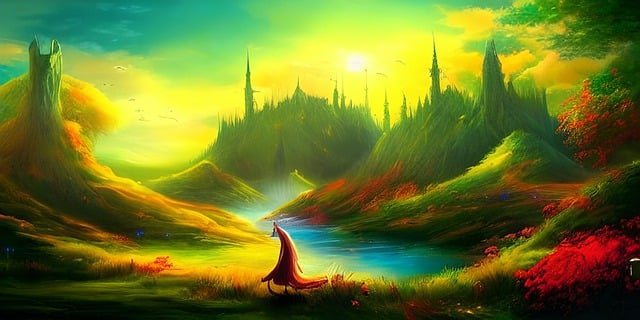jazzy spins ✌ Jazzy Spins: The Evolution of a Musical Genre and Its Cultural Resonance

Jazzy Spins: The Evolution of a Musical Genre and Its Cultural Resonancejazzy spins
In the intricate tapestry of music history, few genres resonate with the same vibrant energy and cultural significance as jazz. With its roots deeply embedded in the African American experience, jazz has transcended its origins to become a global phenomenon, continually evolving and inspiring artists across diverse backgrounds. The whimsical nature of its improvisation, the complexity of its rhythms, and the soulful expressiveness of its melodies have all contributed to a rich legacy that captivates audiences to this day. This report delves into the fascinating journey of jazz, examining its transformative power and its ability to adapt to the ever-changing musical landscape.jazzy spins
Jazz emerged in the early 20th century, a product of the confluence of African, European, and Latin musical traditions. Its formative years, largely defined by the syncopated rhythms of ragtime and the emotional depth of blues, laid the groundwork for a genre that would soon take the world by storm. The early pioneers of jazz, such as Louis Armstrong and Duke Ellington, infused their music with a sense of individuality and creativity that encouraged musicians to break free from the constraints of classical forms. This spirit of innovation was not merely a musical revolution; it was also a cultural statement that reflected the struggles and aspirations of a marginalized community seeking to assert its identity.
The evolution of jazz did not happen in isolation; rather, it was influenced by social and political movements that shaped the world. The Harlem Renaissance, for instance, served as a crucial backdrop for the flourishing of jazz, as artists, writers, and musicians converged to celebrate Black culture and challenge societal norms. The genre became a voice for the voiceless, articulating the joys and sorrows of a community through improvisation and lyrical storytelling. This connection to the human experience is perhaps one of the most compelling aspects of jazz, allowing it to resonate with audiences on an emotional level, regardless of their backgrounds.jazzy spins

As the decades progressed, jazz continued to evolve, giving rise to numerous sub-genres, each with its unique flavor and style. The 1940s saw the emergence of bebop, characterized by its fast tempos and intricate melodies, which challenged both musicians and listeners to engage with the music on a deeper level. Pioneers like Charlie Parker and Dizzy Gillespie redefined the boundaries of jazz, introducing complex harmonies and unconventional song structures that paved the way for future generations. Bebop was not just a musical style; it was a reaction against the commercialism of the swing era, a call for artistic integrity and intellectual engagement.jazzy spins

The 1960s and 1970s ushered in a new wave of experimentation, as jazz musicians began to explore the intersections of genre, incorporating elements of rock, funk, and world music into their compositions. Artists like Miles Davis and John Coltrane pushed the envelope, creating works that defied categorization and invited listeners to experience music in new and exciting ways. The genre's ability to adapt and innovate ensured its relevance in a rapidly changing cultural landscape, solidifying its place as a cornerstone of modern music.jazzy spins
In contemporary times, jazz continues to flourish, even as it faces challenges from the rise of digital music and shifting consumer preferences. Modern jazz artists are not only preserving the traditions of the genre but are also infusing it with fresh perspectives and influences. The blending of jazz with hip-hop, electronic music, and other genres has led to a renaissance of creativity, attracting new audiences and ensuring the genre's ongoing relevance. Festivals celebrating jazz have become a global phenomenon, drawing enthusiasts from all walks of life, united by a shared appreciation for the artistry and improvisation that define this remarkable genre.jazzy spins
Furthermore, the rise of technology has transformed the way jazz is consumed and experienced. Streaming services have made it easier for listeners to access a vast array of recordings, enabling them to discover both classic and contemporary jazz artists. Social media platforms allow musicians to connect directly with audiences, fostering a sense of community that transcends geographical boundaries. This digital age presents both challenges and opportunities, as artists navigate the complexities of a rapidly evolving industry while remaining true to their artistic vision.jazzy spins
In conclusion, the journey of jazz is a testament to the resilience of creativity and the power of music as a unifying force. As the genre continues to evolve, it remains deeply rooted in its historical and cultural context, reflecting the diverse experiences of those who create and listen to it. The jazzy spins that characterize this genre serve not only as a celebration of individuality and innovation but also as a reminder of the enduring human spirit. As we look to the future, one can only anticipate the next chapter in the ongoing story of jazz, a narrative that promises to be as dynamic and captivating as the music itself.
Fale conosco. Envie dúvidas, críticas ou sugestões para a nossa equipe através dos contatos abaixo:
Telefone: 0086-10-8805-0795
Email: portuguese@9099.com


